

Table of contents
- growth factors
- Steady moisture
- Sufficient amount of light
- Required heat
- Ideal time
- species and varieties
- Old varieties and seed firmness
- seed soil
- seed pots
- The instructions step by step
- pricking
- plant out
- Learn from experience
- Two more tips
The tomato is the queen of the vegetable patch. She gets the sunniest spot, is watered, desiccated and protected from the "bad" rain. The tomato plant is constantly being eyed and the degree of ripeness of its fruit is checked. Will she be able to grow lots of red, juicy tomatoes this time before fall? At the end of the day, if the tomato is good, the gardener is good too.
growth factors
Moisture, light, warmth and time are the elements that affect the success or failure of sowing any type of tomato. Not each of them should be considered in isolation. Only the combination of all components in the optimal dosage and at the required time creates the right growing environment for the tomato. Since not only the gardener but also the unpredictable weather has a hand in the game, it always takes a pinch of luck for everything to fit together.
Steady moisture
Humidity is one of the elements most easily controlled by the gardener. However, it requires daily attention. It is less about humidity than about the fact that the sown seed must not dry out until germination. If the seed dries out in the meantime, no more plants will sprout from it. If the seed has already germinated, it is more forgiving in that regard.
- the seed soil must never dry out
- check moisture daily
- Water in doses without causing waterlogging
- water with a fine water jet
- use a special watering attachment for rearing
- the water should be at room temperature
- Transparent cover protects against water evaporation
Tip:
A well-rinsed detergent bottle is also good for watering.
Sufficient amount of light
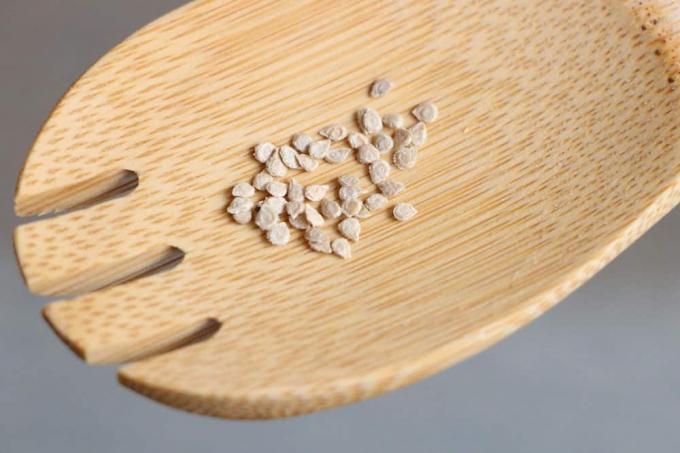
Light is indispensable and irreplaceable food for plants. Tomato plants cannot grow without light. Quality and quantity must be right, i.e. brightness and duration of exposure to light. In winter, the days in Northern Europe are short and the light is weak, but towards spring the light conditions become more and more optimal. The question arises which room or which place benefits most from daylight. The following locations are particularly bright:
- Glasshouse
- conservatory
- Window sill on the east or south side
- outdoor bed
Give the seed the brightest spot you can provide. If you do not have a sufficiently bright place, you can create one specifically. Special growth lamps allow sowing even in dark rooms. The lamps must produce daylight quality of 5,500 to 6,500 Kelvin.
A notice:
If the amount of light is not right, the little plants “go in search of it” and grow taller. The thin, soft and pliable stems are an unhealthy growth.
Required heat
Light alone is not enough. No tomato plant sticks its head out of the seed when it's too cold outside. In order for the tomato seeds to germinate, they need optimal temperatures at all times.
- 22 degrees Celsius is optimal
- Southwest window is heated by sun
- Attention: stone and marble window sills bring cold from below
- if necessary, heat the room additionally
- Outdoors are only sufficiently warm from mid-May
- Avoid drafts and prevent cold shocks
- special rearing boxes provide light and warmth
Tip:
An insulating layer of styrofoam or a small stack of newspaper helps against cold windowsills. This way the little plants don't get cold feet.
Ideal time
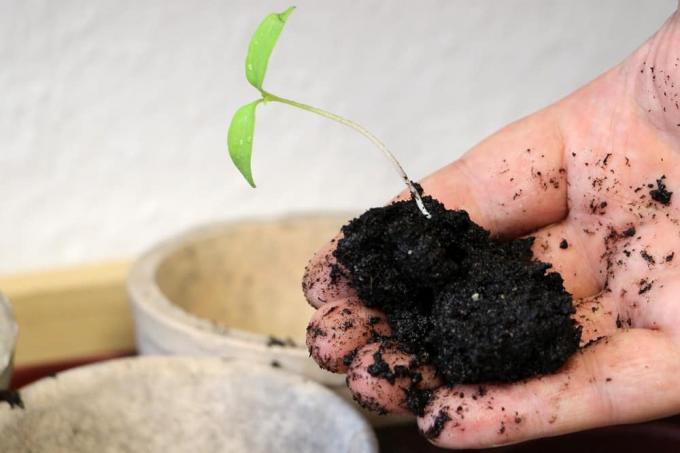
There is simply no fixed time for sowing that is equally suitable for all years. Every year is different. Only afterwards does the gardener know whether the time was well chosen. In general, the earlier you sow, the more time the fruit will have to ripen later. Too early, however, there is also a risk that the conditions will not remain optimal throughout and growth will be impaired.
For the sowing of tomato seeds, time windows have emerged from the experience gained that have the best chance of success. It is crucial where to sow.
- From mid-February: Heated greenhouse and conservatory
- From mid-March: windowsill
- From mid-May: outdoor bed
Even if you missed the early date, it can be worth sowing later, until around mid-April. If the conditions are optimal, the little plants will catch up quickly.
species and varieties
It all starts with a tiny little seed. And here lies one of the greatest challenges for the tomato grower. Which seed from hundreds of varieties should it be? Or much more: Which tomato will taste the most delicious? And is this suitable for the given location? Since hardly anyone has enough space to cultivate all varieties, you have to be content with one or a few varieties. It is important to make the right choice of variety. Below is a rough overview:
Roma tomatoes
They are elongated and egg-shaped and convince with an intense taste. The red fruits have a long shelf life and can be stored well. Good for soups, sauces and ketchup. The Italian bottle tomato 'Corianne' is a well-known representative.
stick tomatoes
They are the classic with evenly round fruits. They grow tall and need sticks for support. Stick tomatoes are very productive. Popular varieties are 'Harzfeuer', 'Vitella' and 'Piccolino'.
Bush or vine tomatoes
They grow low and heavily branched. They deliver the first yields early on. They are suitable for outdoor use and for keeping in containers, for example the 'Balkonstar' variety.
beefsteak tomatoes
Beefsteak tomatoes are always round, large and with lots of flesh. The ratio of sweetness and acidity is balanced and ensures an excellent aroma. Especially good for pasta sauces. The 'Saint-Pierre' variety is a French classic. 'Ochsenherz' is well suited to outdoor cultivation.
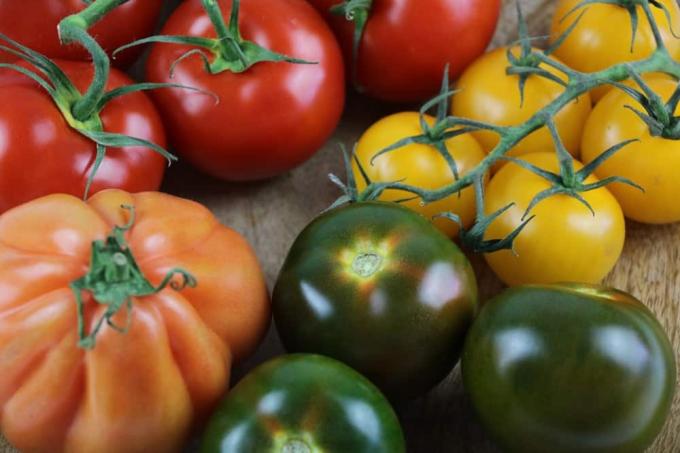
Cocktail tomatoes or cherry tomatoes
Small and sugar-sweet are the hallmarks of these tomato varieties. For the salad or as a bite-sized snack in between. 'Sweet Millon' and 'Cupido'
can also thrive well on the balcony.
wild tomatoes
If you don't have a garden, you don't have to do without your own tomatoes. Wild tomatoes thrive on balconies or even in rooms. They develop an intense aroma. And the great thing: they are resistant to late blight and late blight. 'Red Wilde' and 'Yellow Wilde' are well-known varieties.
Old varieties and seed firmness
The abundance of fruit colors, shapes and aromas is impressive in the tomato world. It is unfortunate that only a few unflavored 'standard' tomatoes find their way onto supermarket shelves. Hybrid strains may be easy to grow commercially, but they are not good for nature or the palate. Not for the wallet, by the way. Because hybrid varieties are not true to seeds. The seeds of their fruits are useless or do not produce the same species again.
That means for you:
Every year you need to buy new seeds.
If you want to contribute to the preservation of diversity, you can give an "old variety" a chance. It is also extremely exciting to embark on a new taste adventure. There are even associations that are dedicated to preserving old varieties and are happy to donate seeds. The advantage of these seeds is their seed strength, so that they can continuously gain their own seeds from the fruit.
seed soil
The seeds must be in the right soil. It must be low in nutrients at the beginning so that the tomato plants can develop their roots well. Special growing soil is available everywhere in specialist shops. In time for the start of the season, they are also available cheaply in most discounters.
seed pots
If you do not sow directly outdoors, you need suitable seed pots or seed trays. Special indoor greenhouses with lids are commercially available. They are good, but also have their price. However, there is also a cheaper way. Whether small flower pots, rinsed yoghurt pots or even the bottom side of the egg container, many things can be used.
The instructions step by step
The seeds and seed pots are ready, are the conditions right? Then the tomato season can start.
- Fill the pot with soil to 1 cm below the rim.
- Press the soil down well.
- Water the soil now, later the seeds would be washed out of place. It must be damp but not too wet.
- Put the seeds on the ground. The distance between two seeds should be about 2 cm.
- Cover the seeds with only a little soil as they are light germinators.
- Press the soil down and carefully pour in a little more.
- Label the containers so that you can later remember which variety is growing there. Pencil works well as it is the least likely to fade from the sun.
- Now the lid can be put on, alternatively cling film or plastic bag.
- Place the potty in a convenient location. Make sure that the growth factors light, warmth and moisture are always given.
- Air the foil occasionally.
The first seedlings can be seen after about 10 days.
If you sow tomato seeds directly in the field from mid-May, choose a bed that gets good sun exposure. Foil covering can increase heat and thus speed up germination, but sunny weather can also quickly become too hot. Then cover the bed during the day.
pricking

Once the first leaves have developed, the plant needs more room to grow. A separate pot of about 9 cm in diameter should be their new home. Now use regular soil, which also contains some nutrients. You can use a pricking stick or a household spoon to get the plants out of the seed tray. Be careful not to damage the delicate roots. Depending on how long it will take to move outdoors, it might make sense to repot it into an even larger pot some time later.
plant out
From mid-May, after the ice saints, the small tomato plants can be planted in the vegetable patch or permanently moved to the balcony in the bucket. Don't let warm temperatures tempt you to plant out earlier. It is important that the temperature does not drop too much at night either. If tomatoes suffer a cold shock, this can lead to growth retardation. If there is even a night frost, the whole plant will freeze to death.
However, it is possible to put the potties out during the day and bring them back in at night. Make sure that the plants do not get the blazing sun without first getting used to it slowly.
Learn from experience
By autumn at the latest it will be clear whether the time for sowing has been chosen correctly. If you are satisfied with the result, you can proceed in a similar way in the next gardening year. Otherwise, consider another time for sowing. Or the timing of sowing can be retained if adjustments are possible elsewhere.
- Experiment with other varieties, these may be more suitable.
- Drive on multiple tracks. Tomato seeds are not expensive. Sow several times at intervals and use the strongest plants.
- Do you know a gardener who has harvested plenty of tomatoes? Ask him how he did it and do the same.
- Optimize growing conditions. How about a greenhouse, for example, if the necessary funds and space are available?
Two more tips
Training tomato plants
When people lift weights or otherwise exercise, muscles become stronger. With every challenge more and more. This is exactly how it works with plants. For example, if they are exposed to the wind, their stems will become stronger. If tomato seedlings are indoors, then you become the wind! Shake the stems a few times a day, gently by hand or with a cotton swab. The result is plants that develop better and later produce the first fruits faster.
Sowing according to the lunar calendar
The moon acts on water, after all there is ebb and flow. And plants are mostly made up of water. Perhaps the moon believers are right in using the moon as a guide when sowing seeds. And if the moon has no effect on the seed, then it can't hurt either. Waxing moon on a fruity day like Leo, Aries or Sagittarius is said to be ideal.
 Home editorial office
Home editorial office
Learn more about tomatoes
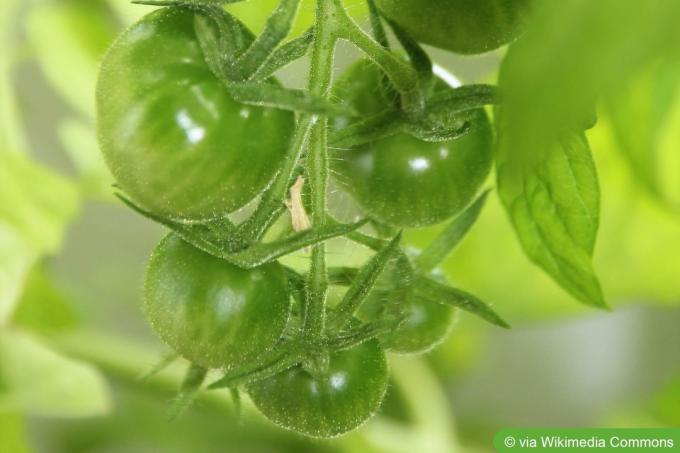
Mexican Honey Tomato: Taste & Cultivation
With the "Mexican honey tomato", hobby gardeners can bring a particularly sweet tomato variety into their garden. Due to its low acidity, it is one of the most popular sweet tomatoes and at the same time very easy to care for.
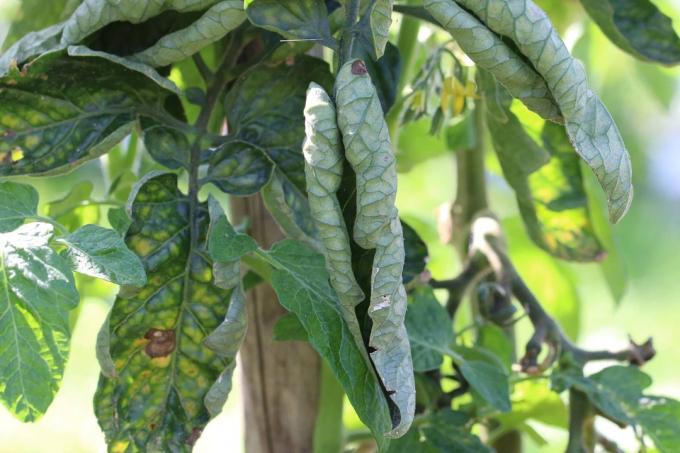
Tomato leaves curl: what to do?
There are many causes of curled leaves on tomato plants. Some are harmless, others can ruin crops. So waiting is not an option. Like a detective, you must search for clues. And then, if feasible, tailor-made countermeasures. Here's what to do when tomato leaves curl.
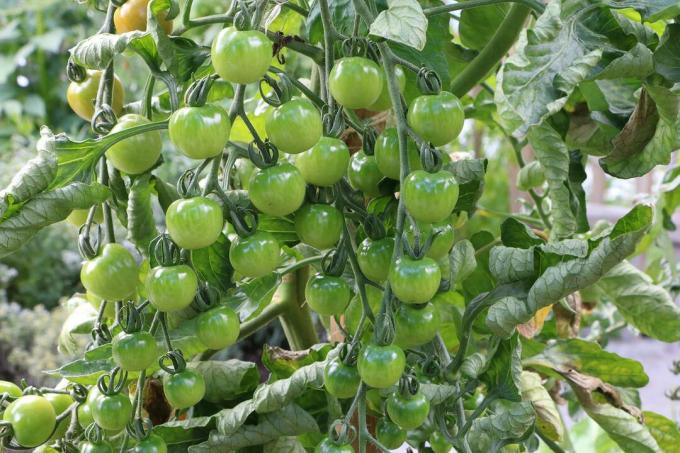
Fertilize tomatoes: how often, when and with what?
Tomatoes need a consistently high amount of nutrients for the development of flowers and fruits. In addition to choosing the right fertilizer, the amount and frequency also play an important role. All essential information for an optimal dosage can be found here.
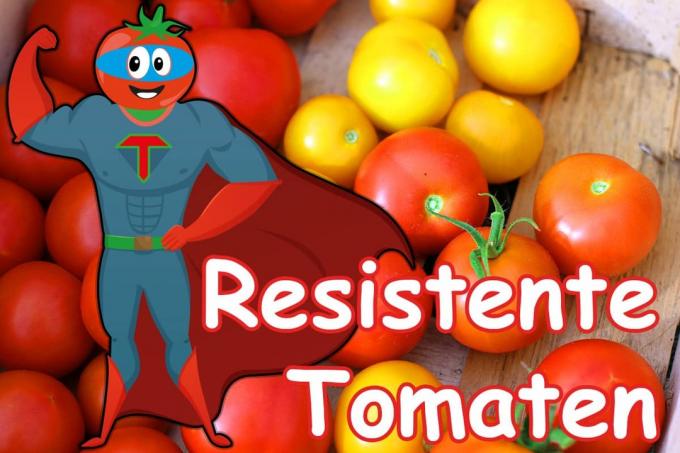
11 resistant tomato varieties defy rain and disease
Tomatoes are considered to be relatively easy to care for, but rain and numerous diseases can bother them. Fortunately, there are numerous tomato varieties that are resistant to many dreaded tomato diseases. We present the most popular specimens in this article.
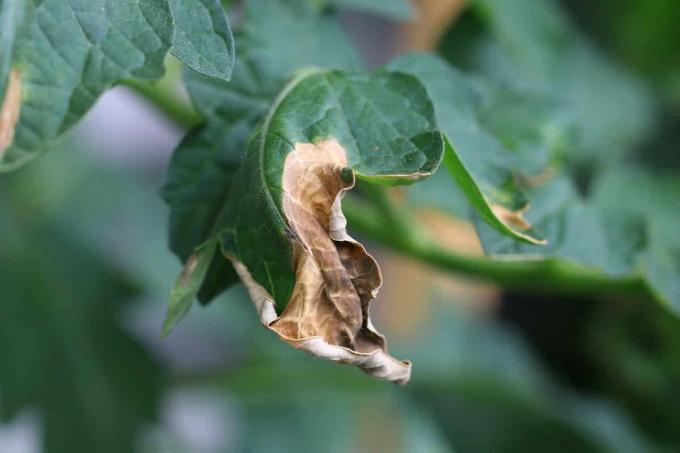
Control late blight and late blight in tomatoes
If pathogens of brown blight and late blight have settled on tomato plants, there is little hope of successful control. Home remedies and mechanical interventions only make sense in the early stages. It is all the more important that you prevent infections in a targeted manner through care measures.

How healthy are tomatoes? Information on calories, nutritional values & Co.
Snack healthy? The tomato makes it possible! Find out here why the red fruit should end up on the plate more often!



